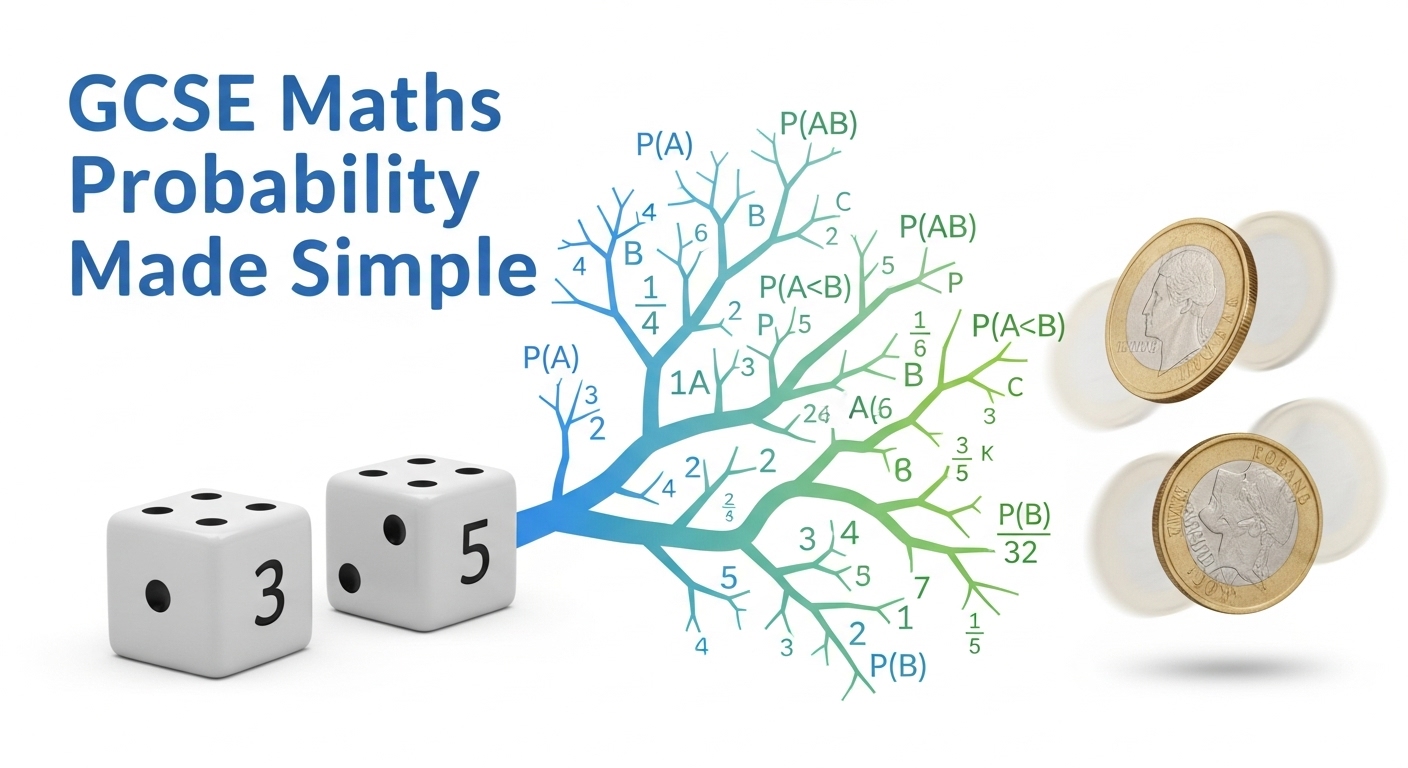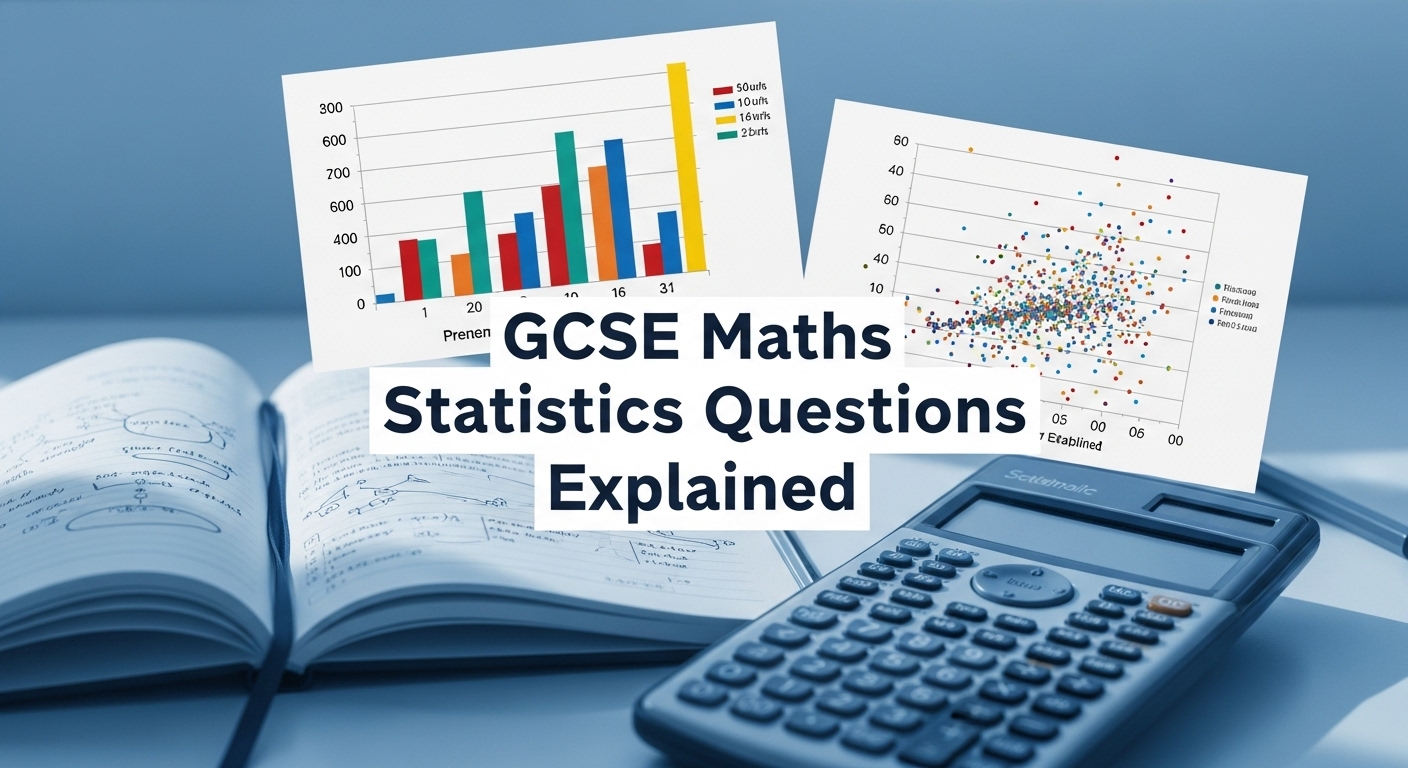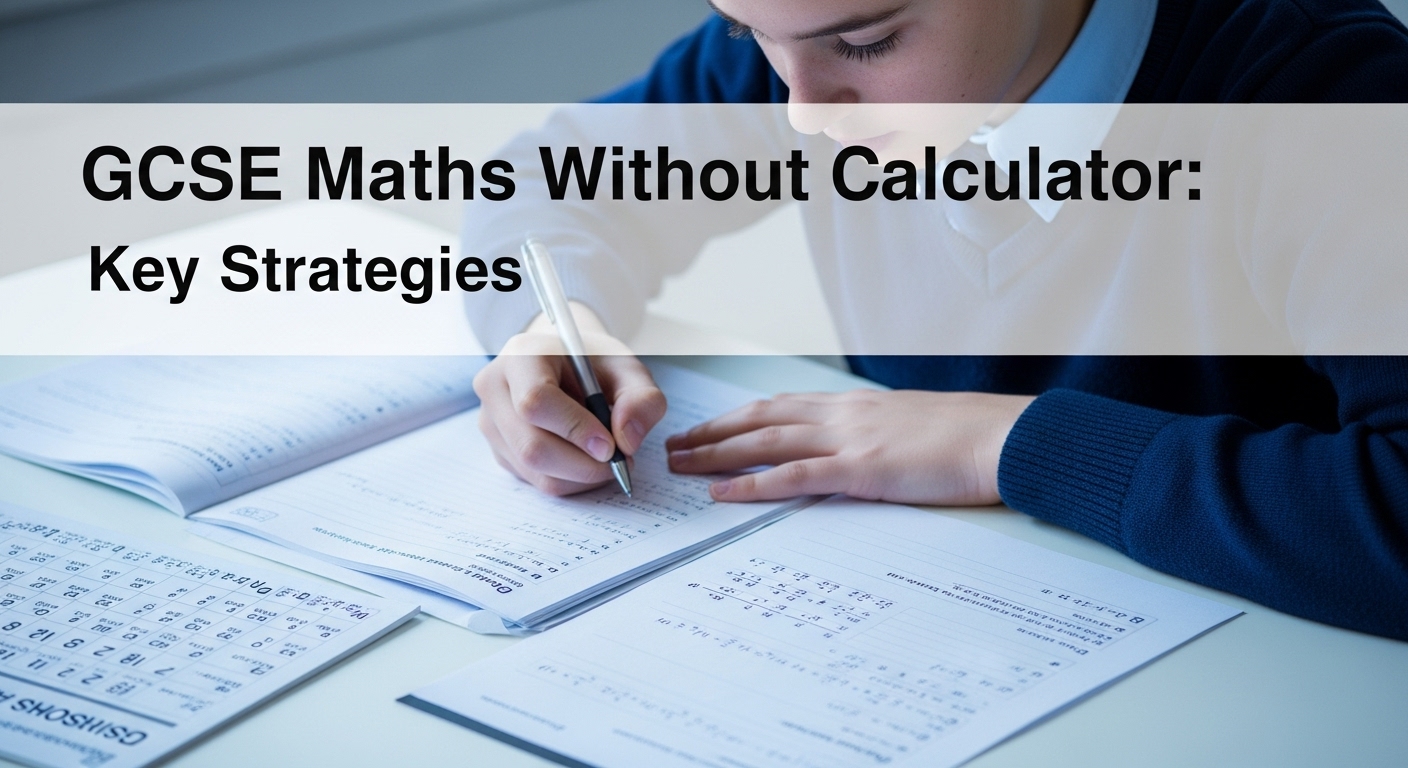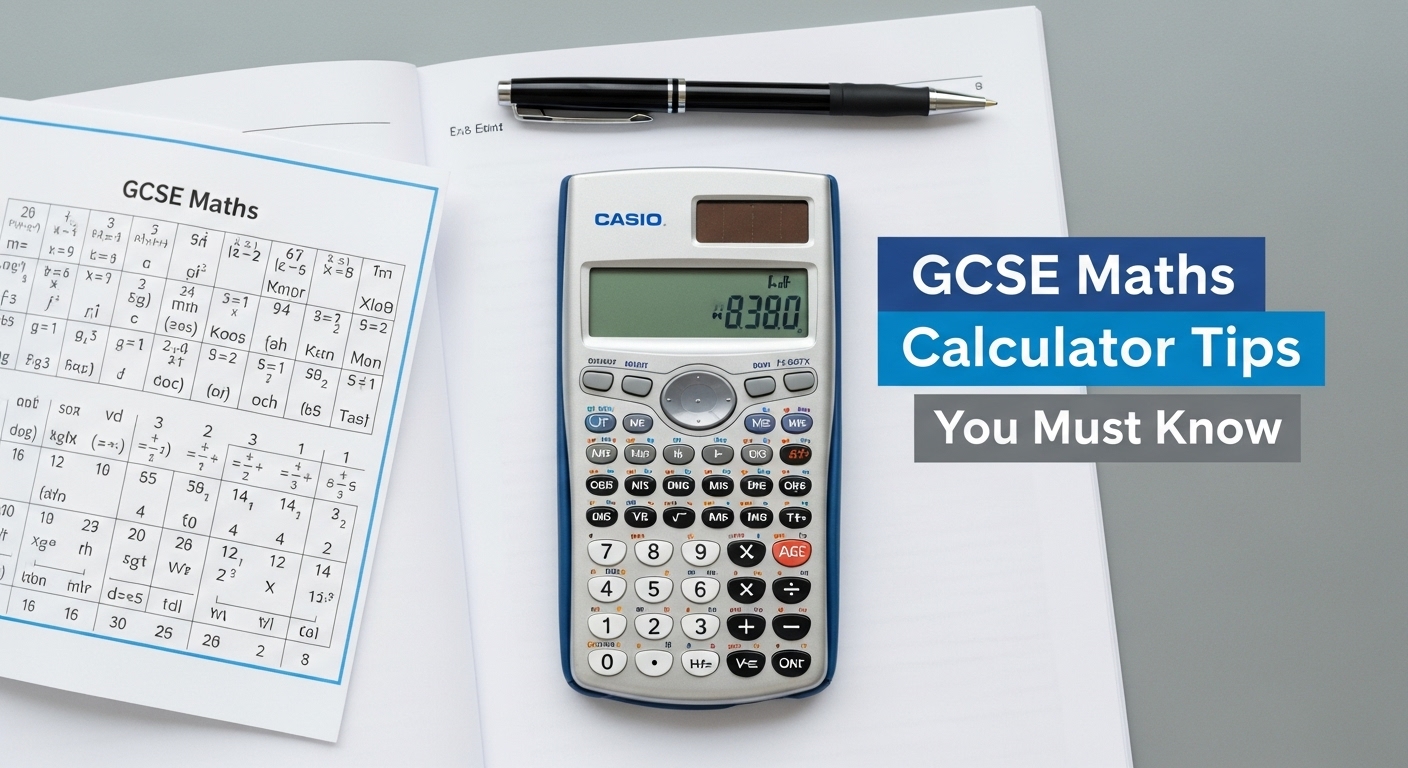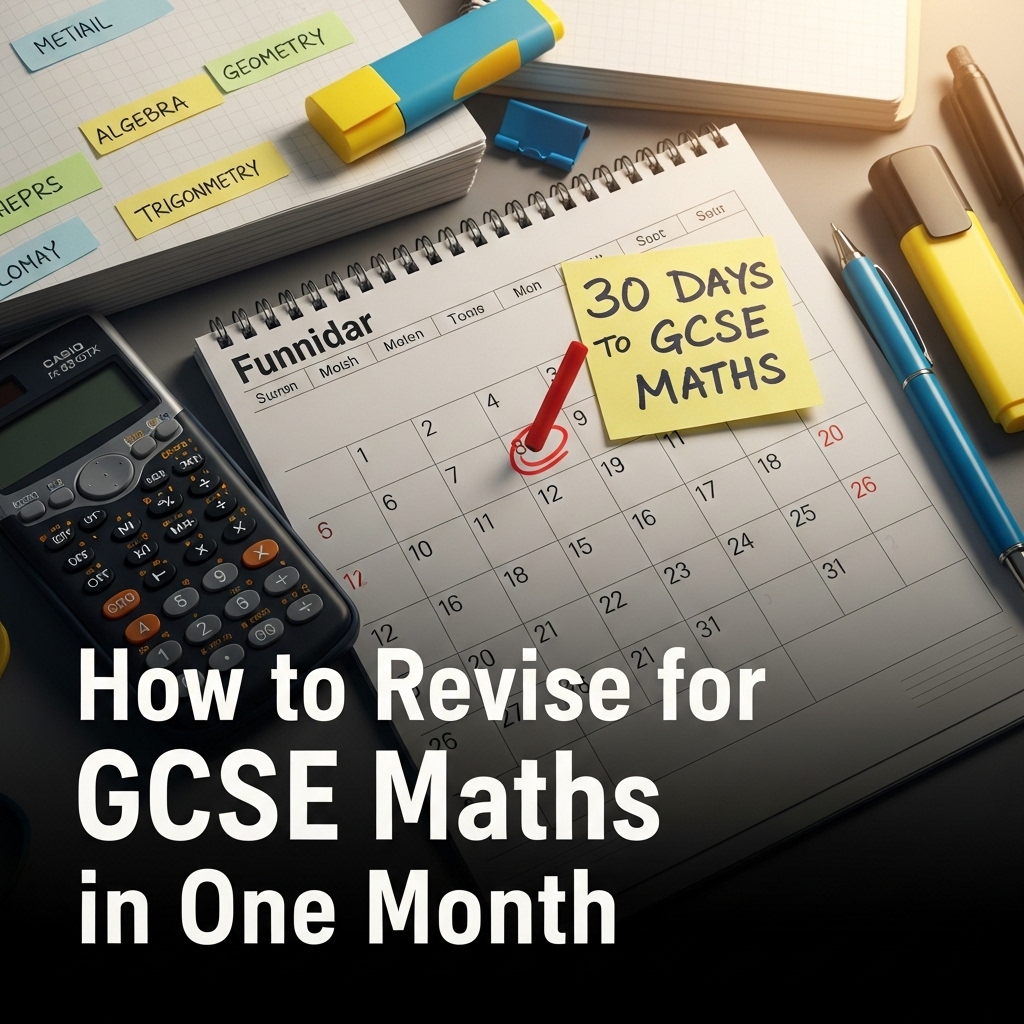Introduction
Probability might sound complex at first, but it is one of the most logical and enjoyable topics in GCSE maths — once you understand how it works.
In this guide, we will break down GCSE maths probability step-by-step, showing you how to calculate outcomes, draw diagrams, and avoid common mistakes.
To make your learning even easier, Mathzem offers free interactive lessons, quizzes, and real exam-style probability problems — everything you need to feel confident on exam day.
Table of Contents
What Is Probability?
Probability measures the likelihood that an event will occur.
It is written as a fraction, decimal, or percentage between 0 and 1.
- 0 = impossible
- 1 = certain
For example:
Rolling a three on a fair six-sided die → Probability = 1/6
Every GCSE probability question is based on this simple principle — identifying outcomes and expressing likelihood clearly.
Probability Basics
Let us define some key terms:
| Term | Meaning | Example |
|---|
| Outcome | A possible result | Getting “Heads” on a coin |
| Event | One or more outcomes | Getting an even number on a die |
| Sample Space | All possible outcomes | {1,2,3,4,5,6} |
| Favourable Outcome | The result you want | Rolling a 4 |
Formula:
Probability = Number of Favorable Outcomes / Total Possibilities Outcomes
3 favorable outcomes (2, 4, 6) ÷ 6 total outcomes = 3/6 = ½
Mutually Exclusive Events
Mutually exclusive events cannot happen at the same time.
Example: Getting a “Head” and a “Tail” on a single coin toss.
Rule:
P(A or B) = P(A) + P(B)
- P(odd number) = 3/6
- P(even number) = 3/6
- P(odd or even) = 3/6 + 3/6 = 1
Tip: Always check whether events overlap — if they do, you will need the following rule!
Dependent and Independent Events
Independent events: One does not affect the other.
Example: Tossing a coin and rolling a die.
P(A and B)=P(A)×P(B)
Dependent events: One outcome changes the probability of the next.
Example: Picking a red card from a deck without replacement.
For dependent events:
P(A and B) = P(A) × P(B after A)
Mathzem’s Probability Simulator lets you experiment with both types, showing live outcome changes visually — a great way to learn interactively.
Experimental Probability
This is probability based on actual data, not theory.
Experimental Probability = Number of Successful Trials / Total Trials
Example: You roll a die 60 times and get a 4 exactly 12 times.
P(4) = 12 ÷ 60 = 0.2
Tip: The more trials you perform, the closer experimental probability gets to theoretical probability.
Tree Diagrams
Tree diagrams help when there are multiple stages or events.
Example: Flipping a coin twice.
| Step | Outcome | Probability |
|---|
| 1 | H | ½ |
| 1 | T | ½ |
| 2 | HH, HT, TH, TT | Each ¼ |
Rule: Multiply along branches, add across outcomes.
On Mathzem, you can draw, expand, and automatically calculate tree diagram probabilities using their interactive visual tool.
Venn Diagrams in Probability
Venn diagrams show overlapping probabilities — perfect for understanding shared and separate events.
Example:
- P(A) = 0.5
- P(B) = 0.4
- P(A ∩ B) = 0.2
Then:
P(A or B) = 0.5 + 0.4 − 0.2 = 0.7
You will find similar visual examples in Mathzem’s Venn Probability module, where you can practice step-by-step questions for free.
Common Probability Mistakes
- Adding instead of multiplying for independent events.
- Forgetting to subtract the intersection when events overlap.
- Not converting fractions and decimals consistently.
- Ignoring total outcomes in word problems.
Fix: Always draw diagrams — they make relationships between events clear.
Probability in Real Exam Questions
Exam boards often disguise probability in word problems.
Example:
A bag has five red and three blue marbles. One is chosen at random. What is the probability that it is red?
Total outcomes = 8
Favourable = 5
P(red) = 5/8
These questions test reasoning — not memory. Practice them regularly on Mathzem’s Probability Quiz Bank for better exam accuracy.
How Mathzem Helps You Master GCSE Maths Probability
Mathzem transforms the way students learn probability through:
- Visual learning: Tree and Venn diagram generators.
- Instant feedback: See where your reasoning went wrong.
- Interactive quizzes: For every GCSE topic.
- Free video lessons: Created by experienced GCSE maths tutors.
You can start today by visiting Mathzem.com — no sign-up required for free practice!
FAQs About GCSE Maths Probability
Is probability on all GCSE maths papers?
Yes, t appears in both calculator and non-calculator papers.
What is the most challenging part of probability?
Usually, identifying whether events are dependent or independent.
How can I improve my probability skills?
Practice daily with short quizzes: Mathzem offers free sets designed by tutors.
Do I need to memorise formulas?
Just a few — most are logical and easy to derive once you understand the basics.
Conclusion
Probability does not have to be confusing — it is about logic, reasoning, and recognising patterns.
With Mathzem’s free GCSE Maths Probability course, you will gain confidence, improve accuracy, and understand precisely how examiners think.
Start mastering probability today!
Visit Mathzem.com to access your free GCSE maths resources and start practising interactive probability questions now.
